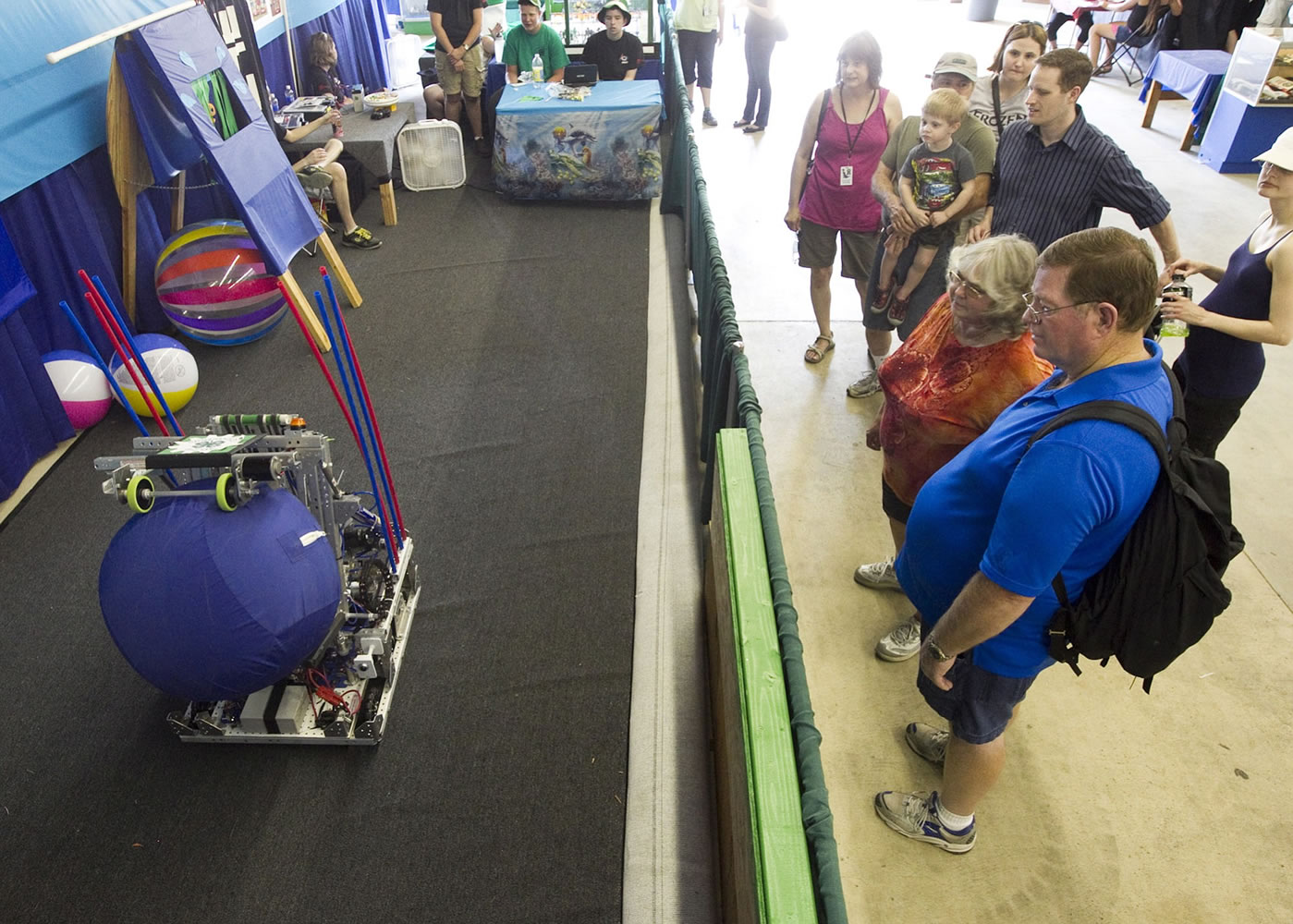Meet Pnemo, pronounced with a silent “p” as in pneumatics. You know, that branch of technology that deals with mechanical motion produced by pressurized gas? Pnemo can play catch, shoot hoops and zoom around — on his own or at the whim of the students controlling him. He’s a robot made out of aluminum, steel, a computer and router, PVC pipes and a 12-volt battery, among other odds and ends.
This brainchild of the local 4-H robotics team, the Clover Bots, is on display during the run of the Clark County Fair.
“If I want to conquer the world, I have to get a couple of these, right?” said a passer-by who watched the robot shoot a goal.
The Clover Bots placed in the top third among teams around the Pacific Northwest in this year’s annual robotics competition at the Veterans Memorial Coliseum in Portland. Spencer Gwinn, 16, explained that the goal of this year’s competition was for the robot to be able to manipulate a large exercise ball — to pick it up, carry it, throw it and score a goal. Teams around the world learn what the challenge is shortly after the New Year and get six weeks to complete the robot.




